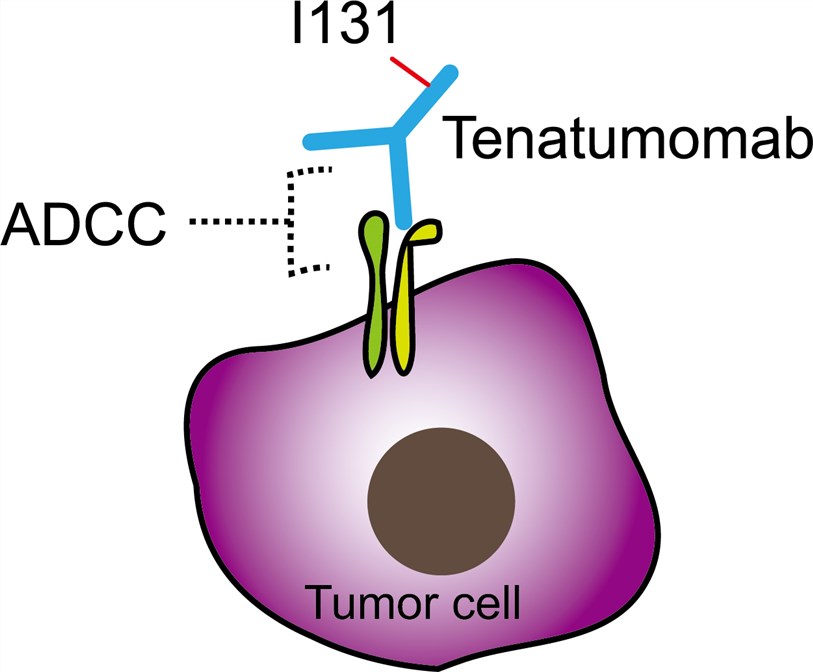Tenatumomab Overview
Introduction of Tenatumomab
Tenatumomab is a mouse monoclonal antibody targeting tenascin-C (TNC), which is an important extracellular matrix glycoprotein distributed in the central nervous system. Tenatumomab was used to study the expression of tenascin-C in various tumor tissue sections, such as breast, colorectal, lung, ovary or cell non-Hodgkin's lymphoma (NHL). It was found that the positive rate of tenascin-C in all cancer tissues was between 64% and 13.3%. Therefore, tenatumomab was developed for anti-tumor radioimmunotherapy. In 2018, 75 cases of systemic T cell NHL and 25 cases of primary cutaneous T cell NHL were studied and analyzed by immunohistochemical with tenatumomab. The results showed that tenascin-C gene was overexpressed in non-Hodgkin's lymphoma, which laid a foundation for the study of the therapeutic activity of tenatumomab targeting tenascin-C on T cell NHL.
Mechanism of Action of Tenatumomab
Tenatumomab is a new anti-tenascin antibody conjugated with reflective element iodine I131. Iodine-131 is a radioactive isotope of elemental iodine, which is an artificial radionuclide (nuclear fission product) with a half-life of 8.3 days. In nuclear medicine, iodine 131 is not only directly used in thyroid function examination and treatment of thyroid diseases in the form of NaI solution, but also can be used to label many compounds for the diagnosis of diseases in vivo or in vitro. Tenascin C is a glycoprotein encoded by TNC gene, which is up-regulated in a variety of tumor cells, and plays a key role in tumor cell invasion, proliferation and immune escape. It can interact with a variety of extracellular substances such as matrix components, soluble factors and pathogens, mediating a variety of biological functions. Tenascin C is described as a regulator of cell adhesion and has been found to be closely related to the occurrence and migration of osteosarcoma, chondrosarcoma, bladder cancer, glioblastoma and other tumors. Therefore, it is a promising strategy to develop new diagnostic, therapeutic and bioengineering tools based on the pathological expression and function of tenascin-C. Tenatumomab can be conjugated with radioactive elements to produce antitumor activity. When iodine 131 labeled Tenatumomab binds to tenascin C, iodine 131 can produce specific cytotoxicity to tumors expressing tenascin C.

Fig.1 Mechanism of action of Tenatumomab
For research use only. Not intended for any clinical use.
This site is protected by reCAPTCHA and the Google Privacy Policy and Terms of Service apply.



